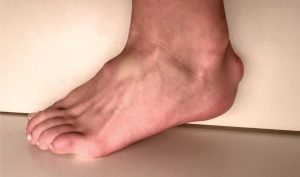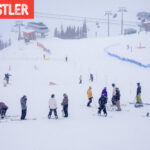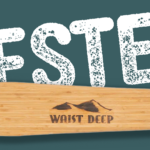Ask any skier who spends more than 40 days a year on snow if he or she has any funny-looking foot bumps. Chances are good they’ll have grape-sized bumps on the back of their heels, a tender swelling on the top of the foot or a protrusion on the side of their foot.
These areas of swelling start because of excess friction between the boot liner and the specific area of the foot. Initially the swelling is made up of excess fluid and inflammation in a pocket (aka  bursae) between the bone and the skin. While the swelling is in the early fluid stage, it tends to be reversible and reduces in size during the off-season. If the swelling continues year after year, the fluid can turn into new bone growth, or bone spurs, which can be permanent.
bursae) between the bone and the skin. While the swelling is in the early fluid stage, it tends to be reversible and reduces in size during the off-season. If the swelling continues year after year, the fluid can turn into new bone growth, or bone spurs, which can be permanent.
The medical term for bone spurs is osteophyte and they can be found in any part of the body where repeated excess force or friction occurs around a bone or joint. Bone spurs are particularly noticeable on the feet where there is relatively little cushioning (less fat or muscle) between the skin and bone. Surprisingly, the presence of a bone spur itself is not usually the direct cause of the foot pain; it’s merely the body’s reaction to a painful area under excess physical wear and tear.
The back of the heel (the calcaneus) is a particularly common spot for bumps on the feet of skiers, hockey players and those who frequently wear high heels. Although they are commonly referred to as “Bauer bumps” by hockey players or “pump bumps” for high heel wearers, health-care workers know them as Haglund’s Deformity. For skiers, other common hot spots are the top of the foot (in front of the ankle near the cuneiform bones) and on the outside of the foot just before the little toe (the fifth metatarsal).
To avoid confusion, the term “bunion” refers to a bony bump on another particular part of the foot (at the base of the big toe) which is not usually associated with excess time in ski boots. Bunions arise because of a combination of factors that include footwear choice (too much time in heels or shoes with a narrow toe box) and specific variations of foot anatomy.
Both of my children, who are former racers and spent upwards of 50 days per year on snow, still have bothersome bumps on their feet. Could I have done something to prevent them from having painful, funny-looking feet? I asked Calgary-based podiatrist and former Squire Johns bootfitter Andy Irvine, who said that buying boots from an experienced bootfitter is the most crucial first step in prevention.
“One of most common mistakes is buying boots for kids a little on the larger size so that they will last for two seasons instead of one,” says Irvine. “When boots are too large, there’s more room for the foot to move in the boot, which allows more repeated trauma to various hot spots.”
Despite a good bootfitting, if someone spends enough time on the slopes with not enough recovery time, the painful foot bumps can develop anyway. When this happens, it is time to re-visit the bootfitter to possibly punch out or grind the shell, add pads to the boot liner or toe separators to straighten joints, or make a custom insole. A visit to a foot-care professional like a chiropodist, podiatrist or an orthopaedic surgeon may also be needed. Treatments can range anywhere from simple stretching exercises and custom orthotics to ultrasound shock wave therapy, and for more advanced problems, bone surgery.



